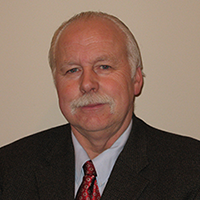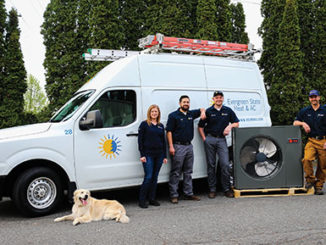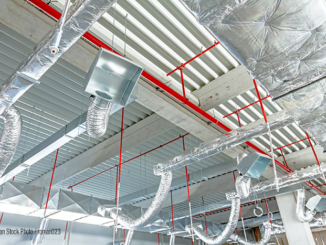
By / Norm Grusnick, P.Eng
Transmission of respiratory infections through the air is classified as direct contact or airborne. In 2003 with the SARS-CoV-2, it was never established how long the virus remained infectious in the air. Because viruses generally have a minimum dose at which they cause infection, health risk is related to concentration in the air and duration of exposure.
As the novel COVID-19 continues its global spread, the importance of ensuring healthy indoor air quality is paramount to helping lower the curve of infections. Studies have demonstrated that higher ventilation rates have a direct impact on lowering the spread of microbials in workplaces and other occupied spaces. ASHRAE Standard 62.1, Ventilation for Acceptable Indoor Air Quality, specifies minimum ventilation rates and other measures for new and existing buildings.
Demand control ventilation (DCV), which adjusts outside ventilation air based on the number of occupants and the ventilation demand for those occupants create, is seen as a convenient solution to satisfy ASHRAE 62.1. However, this type of control is often left to the end user with few guidelines to calculate correct ventilation rate. This may create levels that are ineffective.
The benefit of higher levels of outside air intake is that it will help slow the rate of microbial growth, including viruses such as COVID-19. Outdoor air intake is one of the most difficult air measurements to take properly. System designs are typically 500 feet per minute for 100% outside air. However, end users typically want to reduce as low as 10% to save costs. At the lower rate the velocity of 50 FPM is very difficult to measure accurately.
When CO2 levels are being measured in the return air as opposed to in an area near people breathing level, it will show a lower CO2 indication than what occupants are breathing. Outside air CO2 levels continue to rise in North America, and measuring these as well as indoor levels is critical in maintaining PPM calculations. When only indoor levels are used for differential calculations based on an assumed outdoor level, the effect is less outside air is being introduced to the space. Building owners and facility managers should review their operating sequence to safeguard occupant health and safety. For example, if a building has a target CO2 setpoint of 1100 PPM or more above background, consider reducing so to facilitate introduction of more outside air.
Building operators should regularly check outside air intakes, outside air dampers, and filters to be sure they are free of obstructions. These efforts may increase energy costs to the conditioned spaces, but it is the most socially responsible way to keep schools and businesses free from the spread of unwanted viruses, including COVID-19.▪



